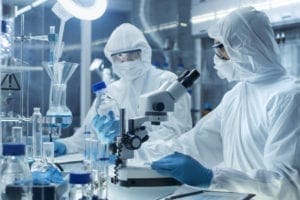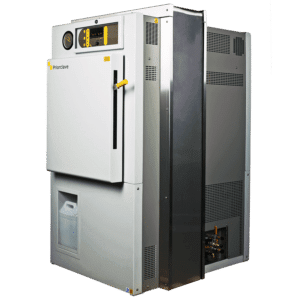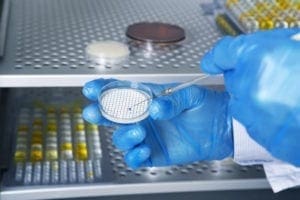Laboratory Autoclaves: Integral to Modern Research
 High-volume automated methods have made it possible for researchers to quicken the pace and impact of scientific discovery, efficiently plucking one life-altering molecular needle after another from the vast biochemical haystack. They’ve achieved this by moving beyond the highly manual bench activities we all learned in high-school chemistry. Instead, they rely on an interlinked assembly line of millions of dollars of precision equipment, performing bulk analysis on hundreds of millions of samples. These small-sample, high-volume analysis methods mean that now, more than ever, lab facilities need to be absolutely free of contaminants. The once-humble lab autoclave has become an integral link in the modern research chain.
High-volume automated methods have made it possible for researchers to quicken the pace and impact of scientific discovery, efficiently plucking one life-altering molecular needle after another from the vast biochemical haystack. They’ve achieved this by moving beyond the highly manual bench activities we all learned in high-school chemistry. Instead, they rely on an interlinked assembly line of millions of dollars of precision equipment, performing bulk analysis on hundreds of millions of samples. These small-sample, high-volume analysis methods mean that now, more than ever, lab facilities need to be absolutely free of contaminants. The once-humble lab autoclave has become an integral link in the modern research chain.
Lab Autoclaves for “Clean Room” Conditions
 At one time “lab dishwasher” was a low-wage job title, not a piece of equipment. On the odd occasions when the person with that title needed to be sure a sample or container was sterile, he or she hauled out the trusty old stove-top lab autoclave–which was technically indistinguishable from an old-fashioned pressure cooker.
At one time “lab dishwasher” was a low-wage job title, not a piece of equipment. On the odd occasions when the person with that title needed to be sure a sample or container was sterile, he or she hauled out the trusty old stove-top lab autoclave–which was technically indistinguishable from an old-fashioned pressure cooker.
Those methods don’t cut it anymore.
Today, samples are doled out eight at a time by masked and goggled lab techs wielding multi-channel micropipettes. If the moisture from their breath were to drift into the droplet-sized wells of their sample trays, it could entirely invalidate results–or lead researchers on a maddening wild goose chase.
Similarly, with so many more samples being processed so quickly, the amount of biologically hazardous waste produced by research facilities has continued to climb. This is compounded by the fact that these smaller samples are often prepared in much higher concentrations. The result is that the wastes themselves, in many cases, are more potent than ever. State and local law often mandates that they be sent through a lab autoclave, or processed by a qualified biohazardous waste disposal service.
Lab Autoclaves: Linchpin of Modern Automated Research

But not all autoclaves are right for the automated research facility. An intern balancing an old-fashioned pressure cooker on a hot plate simply can’t keep up, but a medical-grade lab autoclave–optimized for 24/7 hospital operation–is overpriced, tremendously wasteful, and better fit to sterilizing scalpels and destroying soiled bedding than preparing lab samples.
The increased precision of modern equipment and shrinking scale of modern research demands “clean room”-like environments. A modern facility needs a right-sized lab autoclave with precision temperature, pressure, and cycle controls to meet their demands for verifiable, regularly-scheduled sterilization.


